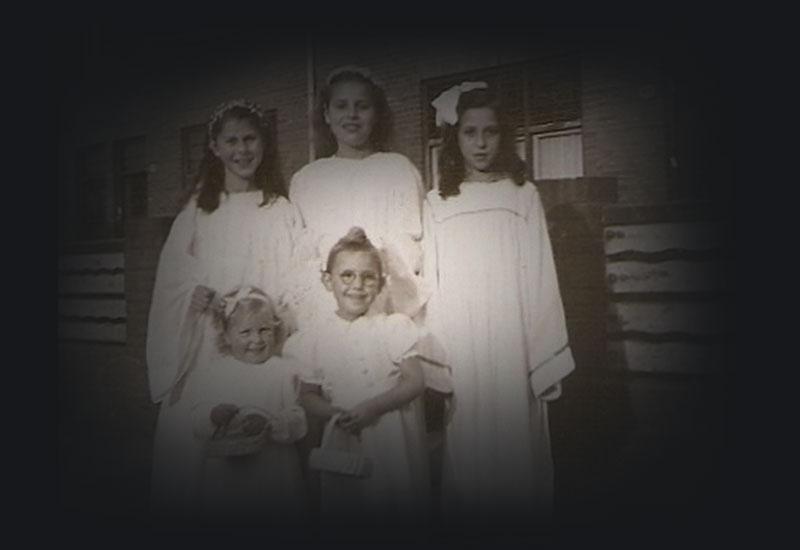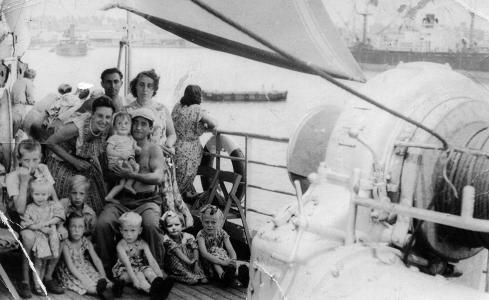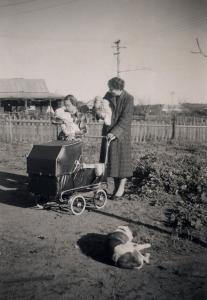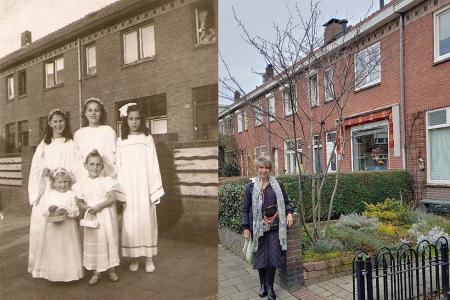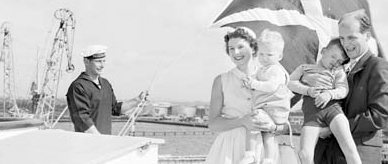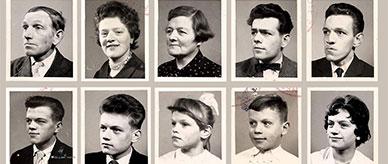Through a child's eyes
During the Second World War the Netherlands was under German occupation. Many Dutch people were sent to forced labour camps. When Jan Peters was taken, his wife, Johanna, followed him despite being pregnant.
The couple and their baby daughter, Nonja, survived the war. However, postwar life was difficult, with high unemployment and limited food and housing.
Jan saw the chance for a better life in Australia and applied to migrate through the Empire and Allied Ex-Servicemen Scheme. Johanna was reluctant to leave her home and family. However, in 1949, seven months after Jan emigrated, she, Nonja and baby Eddie embarked on the long journey to Australia.
As a kid you have no say in the matter of migration. That’s something I want to bring out. I had no say in the matter.
This is a kid’s story, leaving the Netherlands. It’s looking through that part of my life through a child’s lens.
Nonja vividly recalls the journey, first by rail to Genoa, then by ship to Western Australia. She remembers the snow-capped peaks of the Alps seen through a train window and watching flying fish through a ship’s porthole.
In Fremantle, Nonja’s father presented her with a new doll. All her toys had been left behind because her family could only bring a small amount of luggage to Australia.
A new place to call home
Jan enjoyed Australia. He could speak English and developed a busy work and social life. He opened a series of cafés and grocery stores and was a talented musician who performed in bands.
Years after Jan's death, when Nonja read his immigration application, she laughed to see that he had stated his profession as 'motorcycle mechanic'.
Life was different for Nonja’s mother:
Because she didn’t want to go, she refused to learn English for at least four years.
At Mahogany Creek, which is in the hills outside of Perth, we had to walk about a mile every day to the local shop. The only thing my mother could say in English was ‘Two pies, please’. So we ate pies. She got one and us two little kids got half a pie.
In 1955, twins Nancy and Eric were born, and just six weeks later the family moved into the new home they had built.
Fitting in
Nonja and her siblings were desperate to aanpassen (fit in). They quickly learnt English and pestered their parents for the same food and clothing as the Australian kids.
Australia recruited Dutch migrants with trade skills, semi-skilled operatives, and unskilled labour. Many of these families spoke dialect Dutch. Few Dutch women went to work outside the home, so home life stayed Dutch. But in the public sphere, the Dutch wanted to fit in. The children wanted to fit in, and speaking your own language was frowned upon.
Nonja’s father died at just 54, which was very difficult for her mother.
Afterwards, she went over to the Netherlands as much as she could until she couldn’t anymore. And that was a dilemma, which is also mine. Your kids are in one country, but you really, really, really feel very connected to the other country. You end up staying where you feel you have to. Not necessarily where you’d love to.
Nonja’s experiences led her to research and work with other immigrants. She earned a PhD in anthropology, and has written countless publications and curated exhibitions about migration.
I feel like I float in between all the time. I never feel connected.
I don’t feel like I’ve got a real anchor, where I feel this is it, this is where I belong.
[Edited excerpts from interview with Nonja Peters, September 2024]

